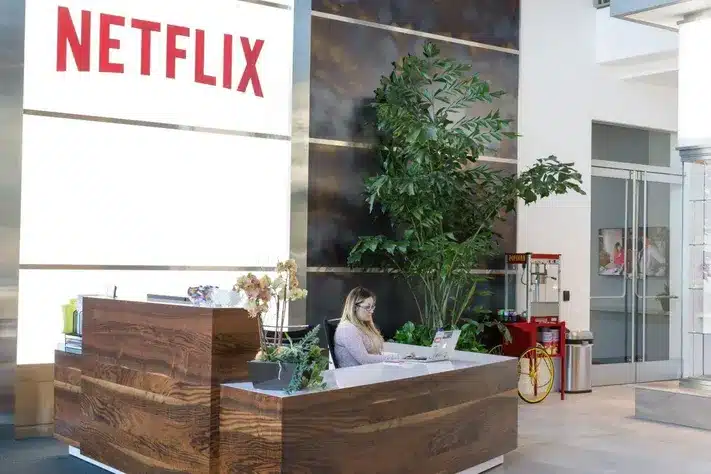This is something almost everyone has experienced. Your heart pounding as you walk into a new office, uncertain of what is to come. Would it be an open forum for ideas or a place where emails are responded to faster than mutters? Open door policy for workplace culture, the hidden network of attitudes, practices, and ways of communication that define our relationships with one another, holds the key to the solution.
Physically and metaphorically, it’s likened to your manager’s door being always open. You can come in at any time with a concern, a question, or simply an insane idea. That is the potential of an open-door policy, and believe me when I say it has the power to truly transform.
Before now, I’ve had a variety of jobs throughout the years, and each had its own culture and communication style. Over the last couple of years., I’ve learned from my experiences how crucial open communication is to creating a productive and happy work environment. Now, take a seat, and learn about my experience navigating the culture at work and the significant effects of having an open-door policy.
Understanding Workplace Culture
Now let us deconstruct it. Having nice tables in the break room isn’t the only thing that contributes to workplace culture, though they’re inviting. Instead, an open-door policy serves as the foundation for everything we accomplish at work. It has an impact on our capacity to interact and communicate, as well as our overall engagement and productivity.
Have you ever worked where information seemed to travel slower than a vacationing sloth? Or maybe a place where ideas were buried beneath layers of bureaucracy? On the other hand, open communication, openness, trust, and a sense of community are critical components of a positive workplace culture. As a result, employees are encouraged to express themselves and contribute to the company’s success.
Key Takeaways
- Open door policies create a safe space for employees to voice concerns, ideas, and suggestions, fostering a culture of open communication, trust, and transparency.
- It can lead to several positive outcomes, including:
- Improved communication channels: Information flows freely, and feedback is encouraged.
- Enhanced employee morale and engagement: Employees feel valued and empowered.
- Strengthened relationships and collaboration: Teamwork and cross-departmental communication thrive.
- Increased organizational transparency: Decision-making processes become clearer, building trust and accountability.
What is the Open Door Policy?

What exactly constitutes an open-door policy? It is a firm effort that promotes open and honest communication among employees and management. The literal part may include keeping a manager’s office door open, but it extends well beyond that. It is about creating a secure environment in which employees can express their problems, ideas, and proposals, knowing they will be heard and acknowledged.
What’s the purpose? Transparency, trust-building, and, ultimately, increasing workforce engagement and productivity. In addition to that, an effective open-door policy has three critical components:
- Accessibility: Managers should be easily accessible to their staff, whether through open office hours, scheduled meetings, or even virtual platforms for remote teams.
- Openness: Leaders must be open to any form of communication, good or poor. Therefore, creating a judgment-free environment is critical for encouraging honest feedback.
- Action: An open-door policy involves more than just talking. There should be a clear procedure for handling complaints and following up on suggestions.
Open-Door Policy Examples
Many organizations across industries have an open-door policy for their employees. Here are some prominent instances of companies that adopt an open-door policy to improve openness, communication, and efficiency.
#1. IBM

For several years, a huge technological corporation that operates in over 170 countries has maintained an open-door policy. It enables employees to communicate concerns with higher-level management. IBM also allows employees to communicate discreetly and provide reports via phone, email, or even snail mail for enhanced protection.
In a study on an IBM subsidiary in France, researchers discovered that the more the open door policy is conveyed to employees, the more confident they feel in the policy, which is an example that any workplace should consider when establishing its open-door policies.
#2. HP

HP, another large technology business, has a culture that encourages employees to voice problems as soon as possible to promote open communication throughout the organization. As part of its goals, HP states that all employees should engage in open communication daily.
There employees can raise any issues within their chain of command before bringing them to the Ethics and Compliance office. As a result of this, employees can feel safe providing or soliciting criticism without fear of punishment from management or coworkers.
#3. Keka

Keka is an HR payroll software firm that takes pleasure in making its employees feel comfortable, inspired, and happy in their jobs. So it’s hardly surprising that the group has an open-door policy.
Keka’s philosophy takes advantage of open doors, both physically and metaphorically, to allow teams to communicate regularly, whether in person or digitally. This company’s policy applies to all levels and departments, so anyone can express their complaints to any appropriate party.
Also, the policy clearly describes the policy’s goals and boundaries, including what types of topics are considered relevant for discussion and how to conduct the most successful discussion to resolve difficulties quickly.
#4. Saint Louis University

Open-door policies are also emphasized at higher education institutions. At Saint Louis University, the open-door policy is intended to establish a more informal conflict-resolution process that complements other procedures for employee reviews and staff grievances.
According to the policy, employees can seek assistance with questions, comments, or concerns by addressing them to their immediate supervisor. This means if employees do not obtain assistance, the policy directs them to use the more formal Staff Grievance Policy.
#5. Health Information Alliance, Inc.

The Health Information Alliance, Inc. operates an open-door policy to encourage a positive work atmosphere. This open-door policy identifies particular “open-door issues,” such as “disciplinary action, work assignments, understanding or application of policies and procedures, transfer and nonsupervisory promotions, or other employment issues.” Other difficulties, such as appraisals and personal conflicts, could be more present.
This is a hybrid open-door policy that adheres to a traditional chain of command, with the employee encouraged to first communicate with their direct supervisor. Also, if they have a complaint about their supervisor, they can take it to the supervisor’s manager.
Despite being a more informal method of addressing issues, this policy emphasizes the importance of thoroughly documenting open-door issues to best address each complaint.
Overcoming Challenges in Implementing an Open Door Policy in the Workplace
Of course, there are always hiccups while implementing a workplace transformation. The following are some obstacles that an open-door policy might present, along with advice on how to overcome them:
A. Resistance to Change
To be honest, some people are content with things as they are. Managers and staff accustomed to a more conventional, top-down approach may object to the implementation of an open-door policy.
To solve this, it’s important to have leadership support and communicate clearly. Emphasize the advantages of the policy and entice people to participate. Also, managerial and staff training sessions can help define expectations and reduce fears.
B. Keeping Information Confidential
If workers are afraid that information will be leaked, they may be reluctant to voice serious concerns.
The solution? : Clearly define confidentiality policies and the channels via which complaints will be handled. If you want even more comfort, think about providing anonymous methods for feedback. Adding a suggestion box system to open door hours is an additional choice. This is so that it can offer an anonymous option for employees who feel uncomfortable speaking face-to-face.
C. Making Certain Fairness and Consistency
If one manager’s door is firmly shut and another’s is open, what would happen? Distrust grows from inconsistency. The answer is to spell out the guidelines and requirements for each manager. Furthermore, evaluations and check-ins regularly can guarantee uniform execution everywhere.
Best Practices On How to Set Up an Open-Door Policy in The Workplace
Implementing an open-door policy does not have to be difficult. It also does not imply that your office door is open at all times for employee queries and feedback. Now let’s get down to business. To guarantee that your policy closes the gap between employees and management, follow these best practices:
#1. Add It to the Employee Handbook
To make your open-door policy legally binding, add it to the company handbook so that employees can access it at any time. This also increases supervisors’ accountability to follow the policy.
#2. Communicate Goals
If your staff are unfamiliar with an open-door policy, you should explain what it is, how it works, and how it will be implemented on your team.
Some businesses, for example, have a very literal open-door policy, which means that employees can walk in and talk to management whenever their door is open. To that effect, discuss how the open door policy works so that employees are confident in using it if necessary.
#3. Set Boundaries
Having open and direct lines of communication with management is beneficial but without limitations. This is because it can lead to a loss of productivity. Set boundaries that are appropriate for you and your team.
Can employees drop by to talk about issues at any time, or should they email you to schedule a meeting? Alternatively, you can provide the optimum times of day or week for employees to visit your office, rather than leaving yourself open at all times, which can hinder you from accomplishing your work.
Also, consider setting boundaries for debate topics. Employees should feel safe approaching management if they disagree with another employee, but this should not become a forum for teammates to gossip about one another or criticize coworkers.
#4. Actively Listen to Employees
If an employee approaches you with a problem or an idea, make sure you actively listen to them. Otherwise, it may appear as if you do not care. That implies you should not type or send emails while they are attempting to communicate with you. Instead, maintain eye contact, ask insightful questions, and conclude the conversation with a summary of what was addressed.
#5. Resolve Concerns Promptly
Some workplaces claim to have an open-door policy, yet when employees express issues, nothing is done. In other words, follow through on your open-door policy by resolving issues as soon as an employee brings them to you.
#6. Prepare a Conflict-Management Plan
If a team member brings a challenge to a manager via the open-door policy, having a conflict-management plan may help everyone involved address it properly. Here are some tips for preparing this type of plan:
- Think of training managers to listen attentively to both sides of an argument and mediate to find a solution
- Help team members understand the proper approach to mentioning conflicts and the most effective ways they can discuss their challenges
- Develop a protocol for escalation scenarios that involve bringing in higher-level managers or human resources officers to ensure quick and satisfactory resolutions to challenges
#7. Securing Leadership Buy-In
Even if your organization has a well-thought-out open-door policy, it will not be effective if your leaders and managers do not know how or are unable to handle it effectively. This is because it will have a detrimental influence on manager morale and employee trust.
Instead, get your leadership team’s buy-in by organizing a separate process training session. Highlight its significance and how it will benefit them and their teams. Guide management on:
- How to take an empathetic approach to employees’ feedback and ideas
- Setting boundaries and expectations to help them protect their time and maintain productivity
- Handle specific situations, particularly delicate ones like conflicts and harassment claims
People and leadership abilities do not come naturally to everyone. This is why some managers may require further soft skill training to improve their listening abilities, emotional intelligence, and overall approachability.
To summarize, implementing an open-door policy begins at the top. Leaders must set an example by displaying their commitment to openness and open communication in all they do. As a result, when employees see their leaders practicing what they teach, they are more inclined to support the culture shift.
Case Studies of Companies With Effective Open Door Policies
Let’s look further into the global scene of effective open-door policy implementations in the workplace.
#1. Zappos: Building a Culture of Transparency Through Open Communication

Zappos, the online shoe store, is well-known for its distinct company culture, which prioritizes transparency and open communication. Their policy is a key component of this worldview. This is how it works.
A. Holacracy Structure
Zappos operates a holocratic system, which means that all employees have a say in decision-making. This is fully consistent with the open-door concept, as anyone can approach anyone else in the firm with questions or concerns.
B. Weekly All-Hands Meeting
Every week, Zappos organizes all-hands meetings in which employees have a chance to ask questions about everything from corporate strategy to everyday operations. This encourages transparency and keeps everyone updated.
C. “Teal” Management.
Managers at Zappos are known as “Teal” and serve as mentors rather than typical supervisors. This encourages a collaborative environment in which open communication thrives.
The effect: Zappos’ open-door policy and emphasis on openness have resulted in a highly engaged and motivated workforce. Their employees feel respected and encouraged to contribute, resulting in a company culture that values innovation and customer attention.
#2. Netflix: Freedom and Responsibility with an Open Feedback Culture

Netflix is another firm noted for its unique approach to workplace culture. Their policy is founded on the principles of “radical transparency” and employee empowerment.
A. Peer-to-Peer Feedback
Instead of typical performance assessments, Netflix encourages employees to provide each other with positive feedback throughout the year. This open communication encourages constant learning and progress.
B. Unlimited Vacation
Netflix trusts its employees to manage their own time and workloads. This increases flexibility while removing superfluous hierarchies, allowing for more open contact with managers.
C. “Context, not Control” Theology
Managers provide context and direction while allowing employees to make their judgments. This in turn promotes a sense of ownership and eliminates barriers to free communication.
The effects: As a result of Netflix’s philosophy and emphasis on feedback, its workforce has become highly productive and self-directed. Workers are given the freedom to own their work and to easily discuss problems and solutions with their supervisors.
#3. HubSpot: Building Trust Through Accessibility and Open Communication

HubSpot, an inbound marketing and sales software establishment, values open communication and employee well-being. Their policy shows such commitment.
A. Open Office Design
HubSpot’s physical workspace encourages simple access. Employees feel more at ease approaching anyone with questions in open-plan offices where bosses are easily accessible.
B. The “Ask Me Anything” Sessions
HubSpot often offers “Ask Me Anything” events in which workers can submit anonymous questions to leadership on any topic. This provides a comfortable environment for open discussion and fosters trust between employees and leadership.
C. Culture Code Encouragement
HubSpot has a clear company culture code that values open communication and transparency. This code is reinforced through training programs and ongoing communication, ensuring that everyone knows the significance of the open-door policy.
Impact: HubSpot’s open-door policy has created an environment of trust and collaboration. Employees feel comfortable sharing their issues and suggestions, resulting in a more engaged and inventive workplace.
These are just a few instances of how businesses have effectively used open-door policies to alter their workplace cultures. This implies that by promoting open communication, establishing trust, and empowering people, you can also help your staff reach its full potential and create a dynamic work environment.
The Impact of Implementing an Open Door Policy In A Workplace

I once worked for a company that adopted an open-door policy. At first, there was some hesitancy. Would my boss listen? Nevertheless, the culture gradually shifted. Employees began popping in with queries, and supervisors actively solicited input. What was the result? Morale skyrocketed, productivity surged, and we even received an award. Now, let’s get to the good stuff: the real impact of an open-door policy. Here’s how it can change your working culture too:
#1. Communication Channels Are Widely Open
Remember that office with its sloth-like communication style? A policy of open doors widens that window. Employees feel more at ease approaching management with questions and concerns, which results in a more efficient flow of information. Imagine a future where project updates aren’t just guesswork and feedback is provided quickly. That is the appeal of free communication.
#2. Improving Morale and Engagement
Let’s be honest, feeling valued at work is a pretty good feeling. Similarly, an open-door policy communicates to employees that their opinions are valued. It generates a sense of trust and transparency by making leaders approachable and choices not made in a dark box.
#3. Building Connections, not Barriers
Hierarchical architectures can sometimes form unseen barriers between teams. An open-door policy removes these boundaries, promoting collaboration and cross-departmental communication. Think about a designer confidently stepping into an engineer’s office to present a concept, or a salesperson stopping by marketing to discuss a new client pitch. Suddenly, teamwork is smooth.
#4. Transparency: Bringing Light to the Why
Let’s be honest, when we are kept in the dark about company decisions, it leads to irritation and suspicion. Hence, an open door policy promotes transparency in decision-making processes. In addition, Leaders can clarify the “why” behind specific decisions, creating understanding and buy-in among their staff.
#5: Increasing Employee Satisfaction
Employees who communicate with their management may be more satisfied with their employment. In essence, workplace satisfaction is critical for boosting morale, fostering growth, and retaining high-value personnel for extended periods. This is because Employees who are satisfied with their treatment by management are more productive, and proactive, and exhibit initiative in their approach to work which benefits the business and helps to improve the quality of work the company produces.
#6. Proactively Addressing Difficulties As they Arise
Management that is not actively involved in day-to-day operations often responds to problems after they have happened, which can result in major time and financial costs for the company. This type of regulation reduces this by allowing senior professionals to become aware of problems as they arise through feedback from other employees. For example, an entry-level employee in a financial department may discover errors with invoice filing and report them to top management, allowing for proactive resolution of the issue rather than developing months later during tax season.
#7. Establishing Trust Among Employees
Trust is an essential component of corporate success since it influences productivity, workplace dedication, and employee retention. Showing that the company allows employees to express their thoughts and ideas helps develop trust over time. For example, an employee who can approach senior management about a workplace issue creates faith in the business’s ability to resolve it, resulting in increased loyalty and motivation to achieve results.
#8. Guiding Newer Employees
In addition to internal training and on-the-job learning, newer employees can learn from senior management. For example, if a person has a specific problem at work that they want to solve, interacting with an experienced manager who has worked in that field can help them develop abilities. Therefore, open-door policies can provide learning opportunities and encourage managers to share their knowledge of hard and soft skills with newer employees when they approach them with issues and challenges.
What was the Open Doors Policy?
The Open Door policy was a statement of principles established by the United States between 1899 and 1900. It advocated for equal rights for all countries dealing with China, as well as support for China’s territorial and administrative integrity.
What is the Open Door Policy Statement?
An open door policy is outlined in an employee handbook and states that the manager’s door is always open for any employee to discuss any issues that may arise.
How is the Open Door policy relevant today?
It fosters a culture of transparency and open communication, allowing employees to feel heard and valued in the workplace.
What is the Open Door Policy at Walmart?
Open Door: Walmart’s Open Door policy and process allows associates to raise concerns, share ideas, and ask questions without fear of reprisal.
Conclusion
As you negotiate your own workplace culture using the open-door policy, I advise you to practice transparency and open communication. Remember, whether you’re a leader, team member, or novice in the workforce, your voice is important. We can promote a culture of trust, respect, and collaboration in the workplace, ensuring that everyone feels appreciated, heard, and empowered to thrive. So go ahead and open the door; you never know what fantastic opportunities await on the other side.
A piece of advice from me: do not be frightened to be innovative! Think about including other aspects into your open-door policy, such as virtual coffee chats, anonymous feedback surveys, or “brown bag lunch” events where employees can speak to leadership in a relaxed atmosphere.
In the end, by implementing these measures, you can foster an environment in which everyone feels comfortable sharing their opinions, offering their ideas, and, ultimately, working together to achieve success!
References
- blog.hubspot.com
- www.betterup.com
- www.indeed.com
- bluelionllc.com






